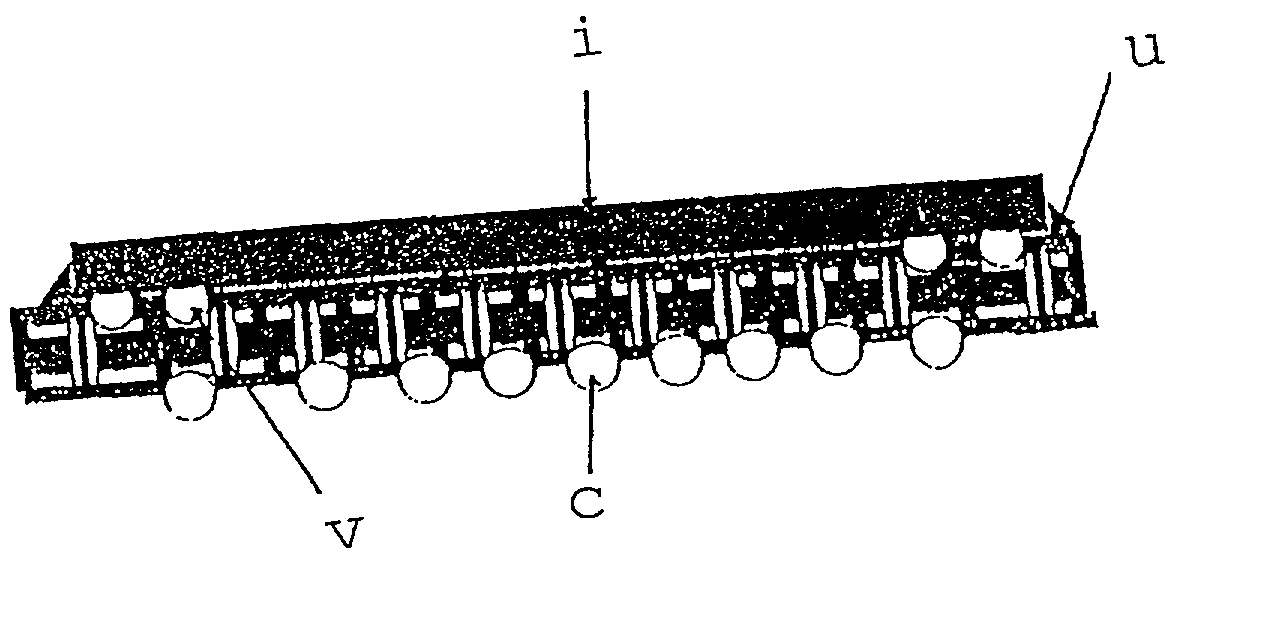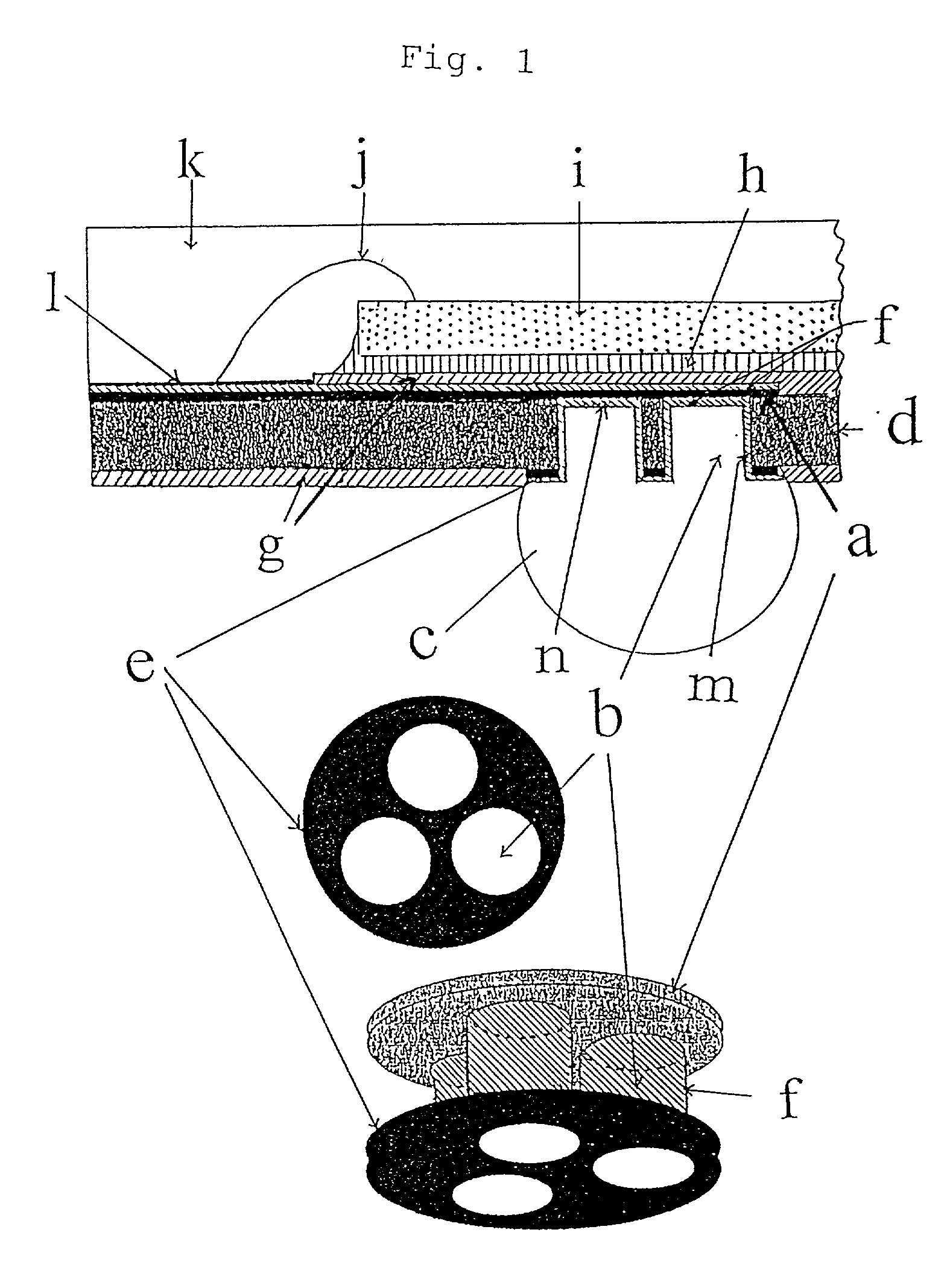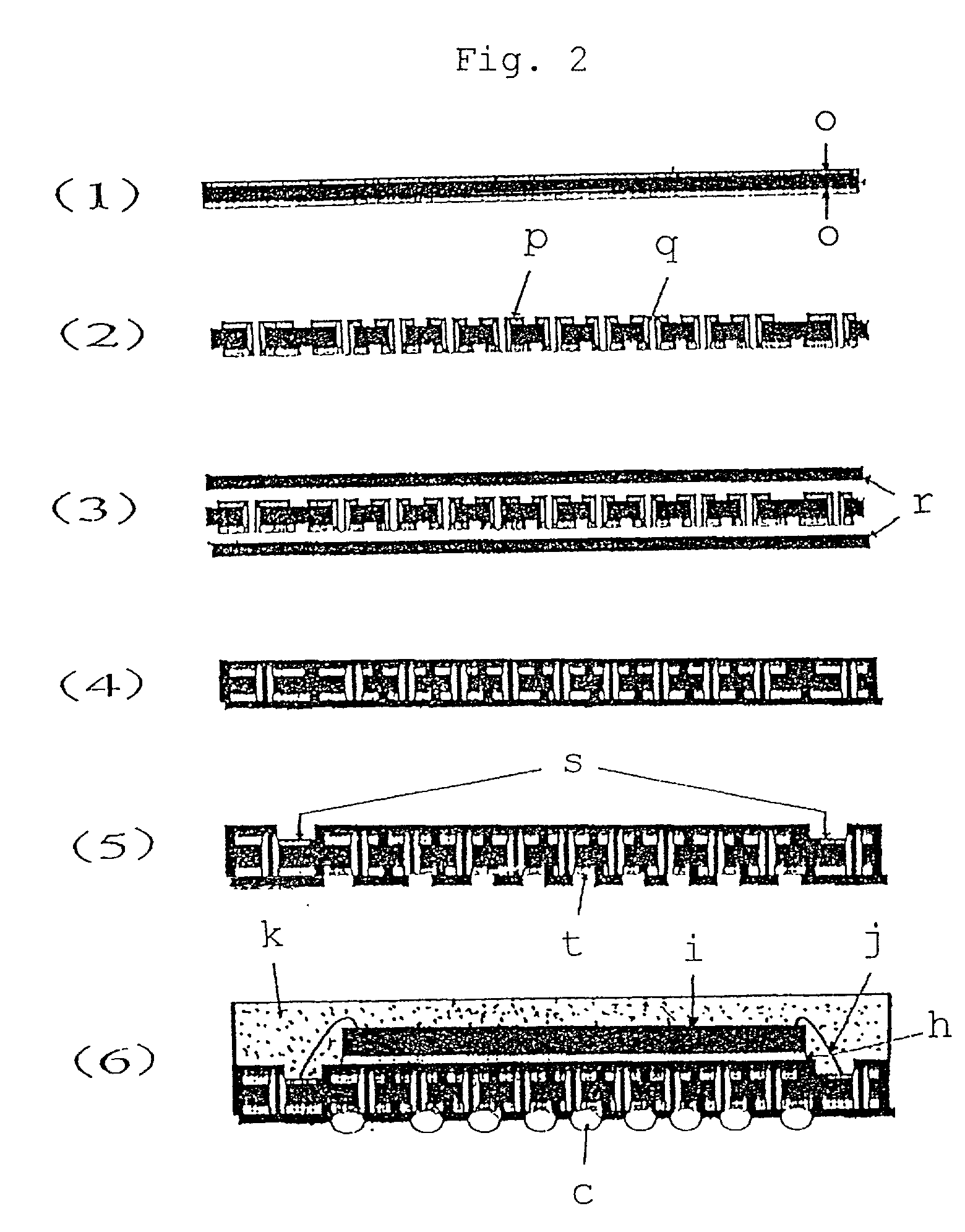Printed wiring board for semiconductor plastic package
a technology of printed wiring and plastic packaging, which is applied in the direction of transportation and packaging, sustainable manufacturing/processing, and final product manufacturing. it can solve the problems of reduced size of solder ball pads, defective products, and heat resistance of substrates and electric insulation of multi-layers
- Summary
- Abstract
- Description
- Claims
- Application Information
AI Technical Summary
Benefits of technology
Problems solved by technology
Method used
Image
Examples
example 1
[0067] 900 Parts of 2,2-bis(4-cyanatophenyl)propane and 100 parts of bis(4-maleimidophenyl)methane were melted to 150.degree. C. and allowed to react for 4 hours with stirring, to give a prepolymer. The prepolymer was dissolved in mixed solvents of methyl ethyl ketone and dimethylformamide. To the resultant mixture were added 400 parts of a bisphenol A type epoxy resin (trade name: Epikote 1001, supplied by Yuka-Shell Epoxy K.K.) and 600 parts of a cresol novolak type epoxy resin (trade name: ESCN-220F, supplied by Sumitomo Chemical Industry Co., Ltd.), and these materials were homogeneously dissolved and mixed. Further, as a catalyst, 0.4 part of zinc octylate was added, dissolved and mixed. To the resultant mixture were added 500 parts of an inorganic filler (trade name: Calcined Talc BST #200, supplied by Nippon Talc K.K.) and 8 parts of a black pigment, and these materials were homogeneously stirred and mixed to prepare a varnish A. A 50 .mu.m thick glass woven fabric having a w...
example 2
[0069] 700 Parts of an epoxy resin. (trade name: Epikote 5045), 300 parts of an epoxy resin (trade name: ESCN-220F), 35 parts of dicyandiamide and 1 part of 2-ethyl-4-methylimidazole were dissolved in mixed solvents of methyl ethyl ketone and dimethyl formamide, and the mixture was homogeneously stirred. The same glass fabric as that used in Example 1 was impregnated with the above mixture, and the impregnated glass fabric was dried to give a prepreg E having a gelation time of 150 seconds.
[0070] Three sheets of the above prepreg E were combined, and 12 .mu.m thick electrolytic copper foils were placed on both the surfaces of the combined sheets, one on one surface and one on the other surface. The resultant set was laminate-formed at 190.degree. C. at 20 kgf / cm.sup.2 under a vacuum of 30 mmHg or less to give a double-side copper-clad laminate having a thickness of 189 .mu.m which includes the thickness of the copper foil. Three blind holes having a diameter of 125 .mu.m each were s...
example 3
[0081] The same varnish A as that used in Example 1 was prepared, and a varnish F was prepared in the same manner as in Example 1 except that the addition of 500 parts of the inorganic filler and 8 parts of the black pigment was omitted.
[0082] A 50 .mu.m thick glass woven fabric (weight: 53 g / m.sup.2, gas permeability: 7 cm.sup.3 / cm.sup.2.sec) was impregnated with the varnish A and the impregnated glass woven fabric was dried at 150.degree. C. to obtain a prepreg G1 having a gelation time 120 seconds (at 170.degree. C.) and having a resin composition content of 51% by weight or a prepreg G2 having a gelation time of 103 seconds and having a resin composition content of 60% by weight.
[0083] Electrolytic copper foils (o in FIG. 2) having a thickness of 12 .mu.m each were placed on both the surfaces of combined two sheets of the prepreg G1, and the resultant set was laminate-formed at 200.degree. C. at 20 kgf / cm.sup.2 under a vacuum of 30 mmHg or lower for 2 hours, to give a double-sid...
PUM
| Property | Measurement | Unit |
|---|---|---|
| thickness | aaaaa | aaaaa |
| bond energy | aaaaa | aaaaa |
| melting point | aaaaa | aaaaa |
Abstract
Description
Claims
Application Information
 Login to View More
Login to View More - R&D
- Intellectual Property
- Life Sciences
- Materials
- Tech Scout
- Unparalleled Data Quality
- Higher Quality Content
- 60% Fewer Hallucinations
Browse by: Latest US Patents, China's latest patents, Technical Efficacy Thesaurus, Application Domain, Technology Topic, Popular Technical Reports.
© 2025 PatSnap. All rights reserved.Legal|Privacy policy|Modern Slavery Act Transparency Statement|Sitemap|About US| Contact US: help@patsnap.com



